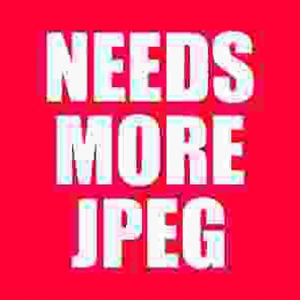santino
FSU gear head
zeitz, I understand that jpegs are compressed (I didn't know png's were), but re-saving as a bmp seems to increase the file size, plus I still have the original jpeg should something go wrong with the bmp while I'm fiddling with it.
This is only logical. You are saving an compressed image in an uncompressed format (file size increases, quality does not).
Coldkennels
Barnack-toting Brit.
You'd be better off saving it as a .psd if you're using photoshop - if all your modifications are on layers, you can work non-destructively unless you flatten them down/merge them.zeitz, I understand that jpegs are compressed (I didn't know png's were), but re-saving as a bmp seems to increase the file size, plus I still have the original jpeg should something go wrong with the bmp while I'm fiddling with it.
As an experiment, I saved the same 5000 x 3500 px 8-bit greyscale image in four formats to compare file size:
JPG: 7.7MB
PNG: 7.6MB
PSD: 16.8MB
BMP: 17.9MB
The .psd file size would increase the more you add to it, but I still think it's a better move than working with bitmap files in the modern age.
Also, it's worth noting you're not actually gaining anything by converting a .jpg to a .bmp; the data lost by saving it as a .jpg in the first place cannot be regained. However, minimising the amount of times you save a .jpg is always a smart move - every additional save increases the amount of data lost until you end up with a hot mess like this:

Ko.Fe.
Lenses 35/21 Gears 46/20
I have zero issues to use cameras specific raw files. As long as lightroom is newer than camera. 
To me it means LR from 2016 v6 , last stand alone.
After 2016 cameras, except Leica made, I need to use Adobe free converter to have files as DNG.
But I got rid of cameras like this.
To me it means LR from 2016 v6 , last stand alone.
After 2016 cameras, except Leica made, I need to use Adobe free converter to have files as DNG.
But I got rid of cameras like this.
seany65
Well-known
coldkennels, I'm not using photoshop and due to the fact that neither program I have came with a manual I don't work in layers because I don't know how to and I'm not sure if the programs I have can.
I learned the hard way about saving jpegs over jpegs when many years ago I had pic I quite liked but it was rather "Pixelly", not grainy but sort of looked a bit like a mosaic, so I tried to use the clone tool clone out "wrong coloured" pixels one at a time (lol!) and due to having an 18gb hard drive with windows xp at the time I kept saving the "worked on" pic as a jpeg on top of the previous version. Pretty quickly each new version took on more of a patterned look as the pixels began to form into a sort of "square" which looked odder with each new save, not quite like your example though.
I learned the hard way about saving jpegs over jpegs when many years ago I had pic I quite liked but it was rather "Pixelly", not grainy but sort of looked a bit like a mosaic, so I tried to use the clone tool clone out "wrong coloured" pixels one at a time (lol!) and due to having an 18gb hard drive with windows xp at the time I kept saving the "worked on" pic as a jpeg on top of the previous version. Pretty quickly each new version took on more of a patterned look as the pixels began to form into a sort of "square" which looked odder with each new save, not quite like your example though.
JoeV
Thin Air, Bright Sun
When working with JPEGs using SAVE AS and appending a letter or number to the file name after each iteration leaves the original file unmolested; all the changes you made are applied to the new file name, not the original.
seany65
Well-known
JoeV, Yes, you're quite right, and I still do that with bitmaps. I save when I want a break from it, when I've made a change that I'm not sure about, when I've done a bit of work and then decide to try something I'm not sure about, or when I think I've finished working on a photo, or when I'm moving the photo to the other program which does something better. This allows me to compare each version in windows slideshow which is paused so I can go backwards and forwards, sometimes quickly, to compare versions. I can end up with a dozen different versions.
Share:

